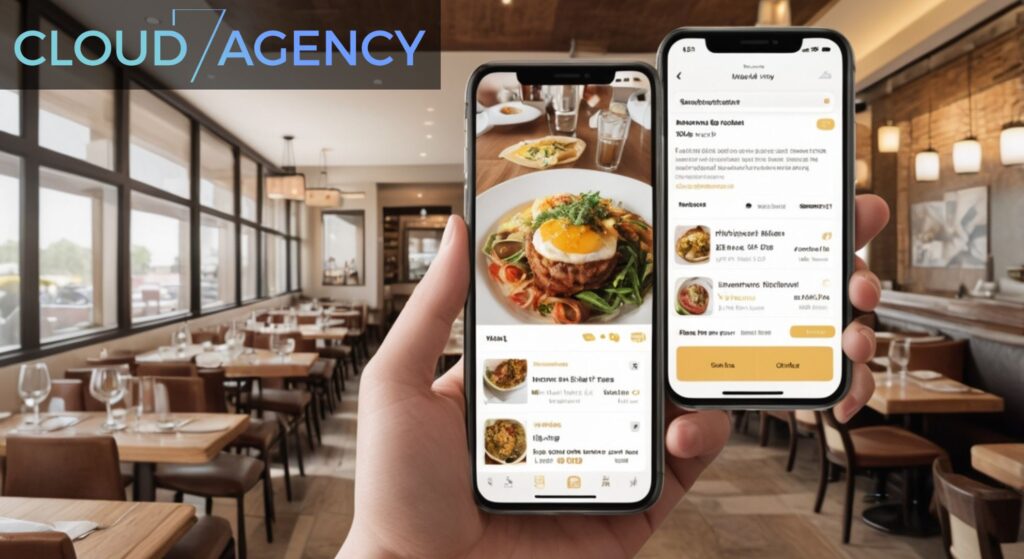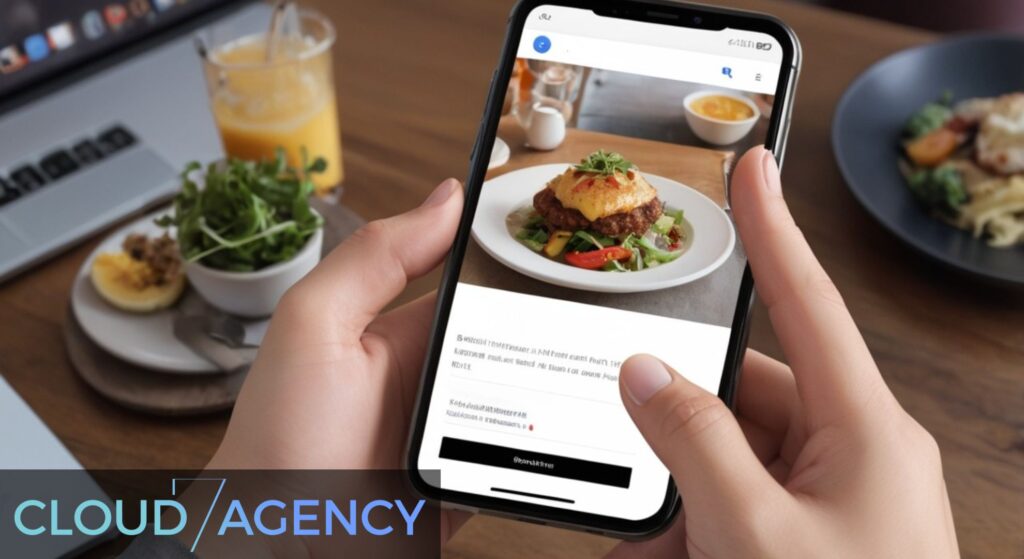The restaurant industry has undergone a dramatic transformation in the digital age, with local search engine optimization becoming the cornerstone of successful food service marketing strategies. As consumers increasingly rely on their mobile devices to discover nearby dining options, restaurants must master the art of restaurant industry optimization to remain competitive in an oversaturated market. The shift from traditional advertising methods to digital marketing has created both unprecedented opportunities and significant challenges for restaurant owners who must now navigate complex online ecosystems to attract and retain customers.
Local SEO for restaurants extends far beyond simply having a website or social media presence. It encompasses a comprehensive approach that includes optimizing Google Business Profile listings, managing online reviews, implementing location-based keyword strategies, and creating content that resonates with local audiences. The stakes have never been higher, as studies consistently show that over 80% of consumers research restaurants online before making dining decisions, with the majority of these searches occurring on mobile devices within close proximity to the actual dining experience.
The complexity of restaurant SEO tactics requires a deep understanding of how search engines prioritize local businesses, particularly in the highly competitive food service sector. Restaurants must compete not only with direct competitors but also with food delivery platforms, review aggregators, and social media influencers who often dominate search results for food-related queries. This competitive landscape demands a strategic approach that combines technical SEO expertise with industry-specific knowledge about consumer behavior patterns and local market dynamics.
Success in restaurant digital marketing requires a holistic understanding of the customer journey, from initial discovery through post-dining engagement. Modern consumers expect seamless online experiences that provide accurate information about menu offerings, pricing, hours of operation, and real-time availability. Restaurants that fail to optimize their digital presence risk losing potential customers to competitors who have invested in comprehensive local SEO strategies that address every touchpoint in the customer acquisition funnel.
Key Takeaways
Google Business Profile optimization is fundamental: A fully optimized Google Business Profile serves as the foundation for all restaurant industry optimization efforts, directly impacting local search visibility and customer acquisition rates.
Review management drives local rankings: Consistent review acquisition and professional response strategies significantly influence both search engine rankings and consumer decision-making processes.
Location-based keyword targeting is essential: Implementing restaurant SEO tactics that focus on neighborhood-specific and cuisine-type keywords helps capture high-intent local search traffic.
Mobile optimization cannot be overlooked: With the majority of restaurant searches occurring on mobile devices, responsive design and fast loading speeds are critical for conversion optimization.
Content marketing builds authority: Regular publication of locally-relevant content, including menu updates, event announcements, and community engagement initiatives, establishes topical authority and improves search visibility.
Citation consistency impacts credibility: Maintaining accurate and consistent business information across all online directories and platforms strengthens local SEO signals and builds consumer trust.
Social media integration amplifies reach: Strategic social media marketing that complements SEO efforts creates multiple touchpoints for customer engagement and drives additional traffic to primary digital assets.
Analytics and tracking enable optimization: Implementing comprehensive tracking systems allows restaurants to measure the effectiveness of their digital marketing efforts and make data-driven optimization decisions.
Understanding the Restaurant SEO Landscape
The restaurant industry operates within a unique digital marketing ecosystem that differs significantly from other local businesses due to the emotional and experiential nature of dining decisions. Unlike service-based businesses where customers may research extensively before making contact, restaurant customers often make spontaneous decisions based on immediate needs, location convenience, and social proof. This behavioral pattern requires restaurant SEO tactics that prioritize immediate visibility and compelling first impressions over lengthy consideration periods.

Search engines have adapted their algorithms to accommodate the specific needs of food service businesses, implementing features like menu integration, real-time hours updates, and reservation booking capabilities directly within search results. These enhanced features create additional optimization opportunities while simultaneously raising the bar for what constitutes a complete local SEO implementation. Restaurants must now consider not only traditional ranking factors but also structured data markup, menu schema, and integration with third-party booking platforms.
The competitive landscape for restaurant industry optimization is particularly intense in urban markets where dozens of dining options may exist within a small geographic radius. Success requires understanding the subtle differences between various cuisine types, price points, and dining experiences that influence search behavior. A fine dining establishment requires different optimization strategies than a quick-service restaurant, despite both operating in the same local market and competing for similar keyword phrases.
Google Business Profile Optimization for Restaurants
Google Business Profile optimization represents the most critical component of any restaurant’s local SEO strategy, serving as the primary interface between the business and potential customers in local search results. The platform’s influence on restaurant discovery cannot be overstated, as it directly controls visibility in Google Maps, local pack results, and knowledge panel displays that appear for branded searches. A fully optimized profile can significantly increase click-through rates, phone calls, and direction requests, while a neglected profile may render even the best restaurants virtually invisible to nearby customers.
The optimization process begins with claiming and verifying the business listing, followed by comprehensive completion of all available profile sections. Restaurants must provide accurate business information including precise location data, current hours of operation, contact information, and website URLs. However, effective restaurant industry optimization extends beyond basic information to include strategic selection of business categories, detailed service and amenity listings, and regular posting of updates and promotional content that keeps the profile active and engaging.
Menu integration represents a unique opportunity for restaurants to showcase their offerings directly within Google search results. Uploading comprehensive menu information with accurate pricing and item descriptions can influence customer decisions before they even visit the restaurant’s website. This feature requires ongoing maintenance to ensure accuracy, particularly for establishments with seasonal menus or frequent specials. The investment in menu optimization often pays dividends through increased customer confidence and reduced inquiry calls about basic menu questions.
Photo optimization within Google Business Profile deserves special attention for restaurants, as visual appeal plays a crucial role in dining decisions. High-quality images of food, interior spaces, and dining experiences can significantly impact click-through rates and customer interest. Restaurants should maintain a diverse photo portfolio that includes exterior shots, interior ambiance, signature dishes, and staff interactions. Regular photo updates signal business activity to search engines while providing fresh content for potential customers to evaluate.
Review Management and Reputation Building
Online review management has evolved from a reactive customer service function to a proactive marketing strategy that directly influences both search engine rankings and consumer behavior. The correlation between review quantity, quality, and local search visibility has been consistently demonstrated across multiple industry studies, making reputation management an essential component of restaurant SEO tactics. Search engines interpret positive reviews as signals of business quality and customer satisfaction, factors that contribute to improved rankings in local search results.

Developing a systematic approach to review acquisition requires understanding the customer journey and identifying optimal touchpoints for review requests. Successful restaurants implement multiple review generation strategies, including post-dining follow-up communications, table tent cards with QR codes linking to review platforms, and staff training programs that encourage satisfied customers to share their experiences online. The key lies in making the review process convenient and accessible while avoiding aggressive tactics that may alienate customers or violate platform guidelines.
Response strategy plays an equally important role in restaurant industry optimization, as search engines and consumers both evaluate how businesses handle feedback. Timely, professional responses to reviews demonstrate active management and customer care, qualities that positively influence both search rankings and consumer perception. Negative reviews present opportunities to showcase problem-solving abilities and commitment to customer satisfaction, often resulting in improved reputation when handled skillfully.
Review platform diversification ensures comprehensive coverage across the digital landscape where potential customers conduct research. While Google reviews carry the most weight for local SEO purposes, platforms like Yelp, TripAdvisor, and Facebook also influence consumer decisions and may appear in search results. Restaurants must monitor and manage their presence across multiple platforms while maintaining consistency in response quality and brand voice. This multi-platform approach creates a robust online reputation that supports overall digital marketing objectives.
Local Keyword Strategy and Content Development
Developing an effective keyword strategy for restaurants requires understanding the intersection between geographic targeting, cuisine-specific terminology, and search intent variations that characterize food service queries. Unlike many local businesses that compete primarily on service-based keywords, restaurants must optimize for multiple keyword categories including cuisine types, dining occasions, dietary restrictions, and location-specific modifiers. This complexity demands a comprehensive approach that addresses various customer personas and search scenarios while maintaining focus on high-conversion opportunities.
Geographic keyword targeting extends beyond simple city and neighborhood names to include landmark-based references, transportation hubs, and popular destinations that potential customers use as reference points. Restaurants located near universities, business districts, or tourist attractions should incorporate these location modifiers into their content strategy to capture relevant search traffic. The goal is to anticipate how potential customers describe their location when searching for nearby dining options, whether they use formal neighborhood names or colloquial references to local landmarks.
Content development for restaurant SEO tactics must balance search engine optimization requirements with engaging, informative material that serves actual customer needs. Blog posts about seasonal menu changes, local food trends, and community events provide opportunities to target long-tail keywords while demonstrating local expertise and community involvement. This location-specific content strategy supports overall restaurant industry optimization by establishing topical authority and creating multiple entry points for organic search traffic.
Seasonal and event-based content creation allows restaurants to capture timely search traffic related to holidays, local festivals, and special occasions. Planning content calendars around predictable events like Valentine’s Day, graduation season, or local sporting events enables restaurants to target high-volume keywords during peak demand periods. This proactive approach to content marketing often results in significant traffic increases during key revenue periods while building long-term search authority.
Technical SEO and Website Optimization
Technical SEO implementation for restaurants requires addressing the unique performance and functionality requirements that characterize food service websites. Page loading speed becomes particularly critical as hungry customers have limited patience for slow-loading sites, especially when browsing on mobile devices while making immediate dining decisions. Restaurants must optimize image compression, minimize code bloat, and implement content delivery networks to ensure fast loading times across all devices and connection speeds.

Mobile optimization extends beyond responsive design to include touch-friendly navigation, easily readable menu formats, and streamlined contact information access. The prevalence of mobile restaurant searches demands that websites function flawlessly on smartphones and tablets, with particular attention to menu readability and reservation or ordering functionality. Click-to-call buttons, integrated mapping, and social media links should be prominently displayed and easily accessible on mobile devices.
Structured data markup implementation provides search engines with detailed information about restaurant offerings, enabling enhanced search result features like menu previews, price ranges, and cuisine types. Schema markup for restaurants should include business information, menu items, reviews, and event details where applicable. This technical enhancement supports restaurant industry optimization by increasing the likelihood of appearing in featured snippets and enhanced local search results.
Website security and accessibility considerations have become increasingly important ranking factors while also affecting customer trust and usability. SSL certificates, secure payment processing for online ordering, and compliance with accessibility guidelines demonstrate professionalism and technical competence. These factors contribute to overall user experience quality, which search engines increasingly prioritize in ranking algorithms.
Social Media Integration and Local Community Engagement
Social media integration serves as a powerful amplifier for restaurant SEO efforts, creating multiple touchpoints for customer engagement while generating valuable social signals that support search engine optimization objectives. The visual nature of food content makes restaurants particularly well-suited for platforms like Instagram and Facebook, where high-quality food photography can drive engagement and attract new customers. However, effective social media marketing for restaurants extends beyond simple food photography to include behind-the-scenes content, staff spotlights, and community involvement that builds authentic connections with local audiences.
Cross-platform content strategy ensures consistent brand messaging while maximizing reach across different demographic segments and user behaviors. Each social media platform serves different purposes within the overall restaurant SEO tactics framework, from Instagram’s visual storytelling capabilities to Facebook’s event promotion features and Twitter’s real-time customer service opportunities. Restaurants must tailor content to each platform’s unique characteristics while maintaining brand consistency and supporting overall local SEO objectives.
Community engagement initiatives provide opportunities to build local authority and generate natural link building opportunities that support search engine optimization goals. Participating in local food festivals, sponsoring community events, and collaborating with other local businesses creates content opportunities while building relationships that often result in valuable local citations and backlinks. These activities demonstrate community involvement while generating authentic social proof that resonates with both search engines and potential customers.
User-generated content encouragement through hashtag campaigns, photo contests, and social media check-in promotions creates authentic social proof while expanding organic reach. Customers who share their dining experiences provide valuable third-party endorsements that influence both search engine algorithms and consumer decision-making processes. Restaurants should actively encourage and curate user-generated content while maintaining quality standards that reflect positively on their brand reputation.
C7A specializes in comprehensive digital marketing solutions that help restaurants maximize their online visibility and customer acquisition potential through integrated SEO and social media strategies tailored specifically for the food service industry.
Frequently Asked Questions
How long does it take to see results from restaurant SEO efforts?
Restaurant industry optimization typically shows initial results within 2-3 months for Google Business Profile improvements and 4-6 months for organic search rankings. However, consistent effort over 6-12 months is usually required to achieve significant competitive advantages in local search results.
What is the most important ranking factor for restaurant local SEO?
Google Business Profile optimization combined with consistent positive reviews represents the most critical ranking factor for restaurants. These elements directly influence local pack visibility and customer decision-making more than any other single factor.
Should restaurants focus on Yelp or Google reviews?
While both platforms are important, Google reviews should be prioritized due to their direct impact on Google search rankings and local visibility. However, maintaining a presence on Yelp remains valuable for comprehensive reputation management and customer acquisition.
How often should restaurants update their website content?
Restaurants should update their websites at least monthly with fresh content such as menu changes, seasonal offerings, or community events. More frequent updates through blog posts or news sections can further support restaurant SEO tactics and customer engagement.
Is it necessary to hire a professional for restaurant SEO?
While basic optimization can be handled in-house, comprehensive restaurant industry optimization often benefits from professional expertise due to the technical complexity and time requirements involved in effective implementation and ongoing management.
What role do food delivery apps play in restaurant SEO?
Food delivery platforms can complement SEO efforts by providing additional visibility and customer reviews, but they should not replace direct website optimization. Restaurants should maintain strong direct online presence while strategically utilizing delivery platforms for expanded reach.
How important are online reservations for restaurant SEO?
Online reservation capabilities can improve user experience and conversion rates, which indirectly support SEO performance. Integration with Google Business Profile and other platforms also provides additional functionality that may influence local search rankings.
Can negative reviews hurt restaurant search rankings?
While negative reviews can impact rankings, the overall review profile and professional response management are more important factors. A few negative reviews among many positive ones typically do not significantly harm search performance when properly managed.
Conclusion
The implementation of comprehensive local SEO strategies for restaurants represents a fundamental shift in how food service businesses approach customer acquisition and market competition. Success in restaurant industry optimization requires a holistic understanding of digital marketing principles combined with industry-specific knowledge about consumer behavior and local market dynamics. Restaurants that invest in professional SEO implementation gain significant competitive advantages through improved search visibility, enhanced customer engagement, and stronger community connections that drive long-term business growth.
The evolving nature of search engine algorithms and consumer expectations demands ongoing attention and strategic adaptation rather than one-time optimization efforts. Restaurants must view SEO as a continuous investment in their digital infrastructure, similar to maintaining physical facilities or training staff members. The businesses that achieve sustained success are those that commit to consistent optimization efforts while remaining adaptable to changing technology and market conditions.
As the restaurant industry continues to evolve in response to changing consumer preferences and technological innovations, the importance of sophisticated restaurant SEO tactics will only increase. Forward-thinking restaurant owners who implement comprehensive local SEO strategies today position themselves for continued success in an increasingly competitive and digitally-driven marketplace that rewards businesses capable of effectively connecting with their local communities through strategic online presence optimization.

